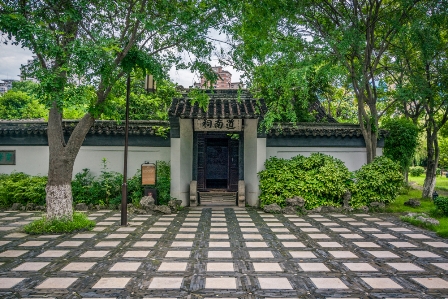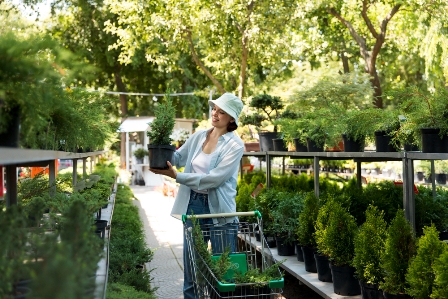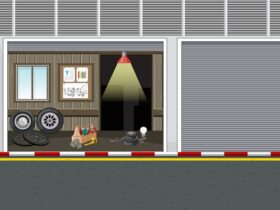Landscaping isn’t just about greenery; it’s an art that extends to the solid elements, known as hardscaping. In this article, we explore the captivating synergy of stone and wood, uncovering the secrets to creating a harmonious landscape design that seamlessly blends these two timeless materials.
Hardscaping involves the use of non-living elements to enhance outdoor spaces. When it comes to achieving a visually stunning and functionally practical landscape, the strategic integration of stone and wood can elevate the aesthetic appeal of any environment.
Choosing the Right Materials
Before diving into the design process, it’s crucial to understand the benefits of both stone and wood. While stone adds durability and a natural feel, wood introduces warmth and versatility. Consider factors like climate, budget, and maintenance requirements when selecting materials for your hardscaping project.
Designing with Stone
Incorporating Stone Pathways
Stone pathways not only serve a practical purpose but also add a charming rustic touch to your landscape. From meandering garden paths to formal walkways, the possibilities are endless.
Creating Stone Retaining Walls
Retaining walls crafted from stone provide structural support while adding character to your outdoor space. They can transform a sloped yard into a series of terraced gardens, offering both functionality and visual interest.
Using Stone in Focal Points
Elevate the aesthetics by incorporating stone in focal points such as water features or sculptures. These elements become the centerpiece of your landscape, creating a sense of drama and sophistication.
Incorporating Wood Elements
Wooden Decks and Patios
Wooden decks and patios extend your living space outdoors, providing a cozy spot for relaxation or entertaining guests. The natural grains and warm hues of wood create an inviting atmosphere.
Integrating Pergolas and Arbors
Pergolas and arbors made from wood not only offer shade but also define specific areas within your landscape. They serve as architectural elements that add a touch of elegance and structure.
Wooden Furniture and Accents
Complete the look with wooden furniture and accents. Adirondack chairs, wooden benches, and tables contribute to the overall theme, making your outdoor space feel like an extension of your home.
Balancing Textures and Colors
Achieving hardscaping harmony involves a delicate balance of textures and colors. Ensure that the chosen stone and wood elements complement each other, creating a cohesive and visually pleasing environment.
Practical Tips for Installation
Professional Installation Advice
For a flawless hardscaping result, consider professional installation services. Experts can ensure proper alignment, stability, and adherence to safety standards.
DIY Considerations
If you’re a hands-on enthusiast, certain hardscaping projects lend themselves to a do-it-yourself approach. However, it’s essential to research thoroughly and follow guidelines to avoid common pitfalls.
Maintenance Guidelines
Preserving the beauty of your hardscape requires routine maintenance. Follow specific care tips for both stone and wood to prevent deterioration and ensure longevity.
Environmental Considerations
Opt for sustainable choices in hardscaping to minimize environmental impact. Explore eco-friendly maintenance options that align with your commitment to a greener lifestyle.
Cost Considerations
Budgeting for Hardscape Projects
Plan your hardscaping budget wisely, considering material costs, labor, and any unforeseen expenses. A well-thought-out budget ensures the success of your project without financial surprises.
Cost Comparison Between Stone and Wood
Evaluate the cost differences between stone and wood. While stone may have a higher upfront cost, wood may require more maintenance over time. Choose materials that align with your budget and long-term goals.
Hardscaping for Different Spaces
Consider the unique requirements of residential landscapes and commercial outdoor areas when planning your hardscaping project. Tailor the design to suit the specific needs and aesthetic preferences of the space.
Popular Trends in Hardscaping
Explore contemporary hardscape designs that seamlessly blend traditional and modern elements. Stay updated on the latest trends to infuse fresh and innovative ideas into your landscape.
Creating Outdoor Ambiance
Enhance the overall ambiance of your outdoor space with strategic lighting and soothing sounds. Water features, like fountains or ponds, contribute to a tranquil atmosphere that beckons relaxation.
Local Regulations and Permits
Before breaking ground, familiarize yourself with local zoning laws and obtain any necessary permits. Compliance with regulations ensures a smooth hardscaping process without legal complications.
Consider factors like climate, budget, and maintenance requirements to make an informed decision.
Yes, opt for sustainable choices in both stone and wood, and explore eco-friendly maintenance practices.
Certain projects are suitable for DIY enthusiasts, but professional installation is recommended for complex designs.
The cost varies based on materials, labor, and project complexity. Proper budgeting is essential for a successful outcome.
Familiarize yourself with zoning laws and obtain the necessary permits before starting any hardscaping project.
Conclusion
The art of hardscaping lies in the seamless integration of stone and wood, creating a landscape that is both visually captivating and functional. Whether you’re aiming for a serene backyard retreat or a dynamic commercial space, the careful combination of these two materials can transform any outdoor area into a masterpiece.









Find Us on Socials